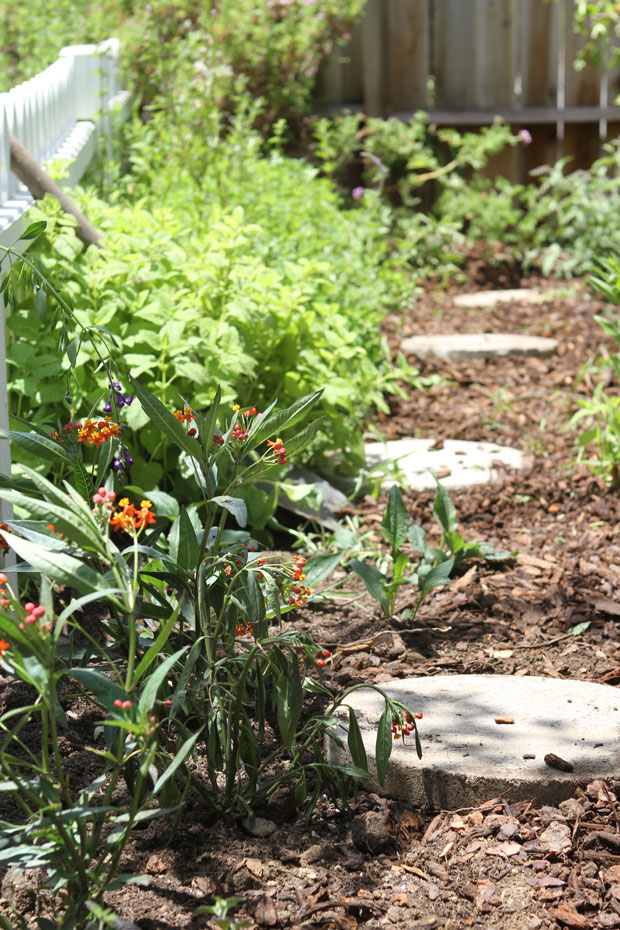May 21, 2012

If you have a sunny spot in your yard right now that is filled with less-than-desirable plants, consider creating a butterfly garden. Not only are butterflies beneficial to a garden because they help pollinate the surrounding flowers, but there is also a lot of enjoyment in planting a special spot to host such magical creatures.
I decided to tackle an area like this at my daughters’ school. It took a few hours down in the dirt, some minor aches and a major need of a manicure, but the sweat equity was worth it for producing a lovely little habitat. I have to admit, I was pretty proud of the end result. I even gave myself a few dirt-covered pats on the back. Even more than that, it was fun to think of all the kids joyfully spying butterflies for seasons to come.
Here is what I planted, knowing they are native perennials:
Coneflowers, milkweed, foxglove, phlox, lantana, salvia, mint, asters and budlia. In the existing area there were already two lovely passion fruit vines, which provide wonderful, nectar-rich flowers for the adult butterflies and delicious fruit, so I kept them in place.
If you live locally, the Santa Barbara Museum of Natural History has the Butterflies Alive! exhibit running now until September 16.
I found this resource for buying caterpillars online.
Tips for creating your own butterfly garden: